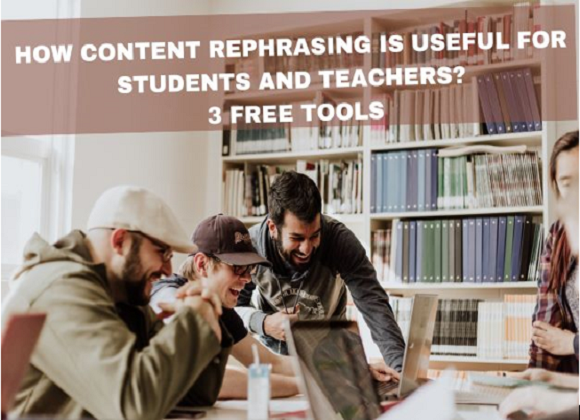In this 21st century, learners have a vast variety of resources available to them both in terms of technical tools to access the study material and content related to their subject material as more information is available now than ever before. As we know that in today’s dynamic world the role of technology is increasing in every sector of work and now slowly it is also becoming an integral part of our education system. You can search for all the study material and content with just one click, not only this but now you can also get all your education through different online platforms. There are a lot of online courses available and you can even get your graduation and post-graduation degree by enrolling yourself in such courses. Some of the online courses are accredited by renowned universities as well. A lot of experienced professionals nowadays want to impart their knowledge to others for which they create different courses and upload them on different platforms that can be accessed by interested individuals. Here let’s try to understand what are some of the basic requirements to create online courses.
Some of the important steps that need to be taken are as follows:
- Identify the target audience for whom you are going to create the course. It could be students of primary classes, upper primary or secondary depending on the learners’ cohort you want to reach. You can also look for audience demand through some surveys or small pilots that can be done with a cohort of people.
- Choose the topic for your course keeping in mind the information you want to deliver to the audience. The topic for your online course could be an area that you’re already knowledgeable about or is in demand by the audience. The course topic should reflect the specific focus of the course content and should describe the intent to reinforce the theme.
- Gather and Structure information for your course content by searching more about the topic. Try to find a variety of different sources on the topic so that you can provide detailed information in your course. This will help you to provide added value and unique angles which will widen the scope of your course. Make sure to add some elements which make your course engaging for the audience.
- Create an outline and structure for your course content by detailing the points you are going to cover in the course. This also includes developing a curriculum for your course. List down the different lessons and topics that will be covered in the course. Once this is done define the learning objectives for each of your lessons or topics to give more clarity to the learner. Include an impactful introduction and a reiterating conclusion to each lesson.
- Choose a platform to upload course content that can be accessed by the audience. You can upload the material to any of the existing platforms or create a new website to publish your content. There are some freely available platforms that provide you with the facility to create simple websites. Make sure after creating this, you inform the audience about the website and course through appropriate channels.
- Create the course content which will explain the information to the learners. Apart from presenting content information, delivering some skills to the audience is something that encourages them to enroll in a course. Skills are required to meet the challenges of everyday life. There are certain skills that are needed in the 21st-century, these skills have been identified by different researchers. Some of the required skills are Critical thinking, Collaboration, Creativity, Motivation, Mentoring Skills, Information and communication technology (ICT), Communication, Interpersonal, Problem Solving, etc.
Consider adding assignments and activities as part of your course curriculum, to help the learners in processing the information they have just learned.
- Choose the media type to deliver the content material. The content can be delivered through different formats depending upon the target audience and the information covered in the course. Some of the popularly used media formats are animated videos, live-recorded lectures, animated presentations, infographics, pdf files, quizzes, games, etc. You can select any of the media types depending on the type of content you want to deliver for example to explain any concept video might be more suitable and for revision, an infographic could be a better option.
Make sure that at the end of your course the learners should get an opportunity to self-assess their knowledge. Try to gather feedback on the attempted course. Ask about students’ experience, suggestions for improvement, and anything else they were expecting from the course through a survey or interview whatever method is convenient for you. You can analyze the responses to enhance the quality of your course in the future.
About the author
Neetu Bartwal is working in Pratham Education Foundation and works on aspects of Content Creation for the teacher capacity development portal: Gurushala. Any views expressed are personal.



